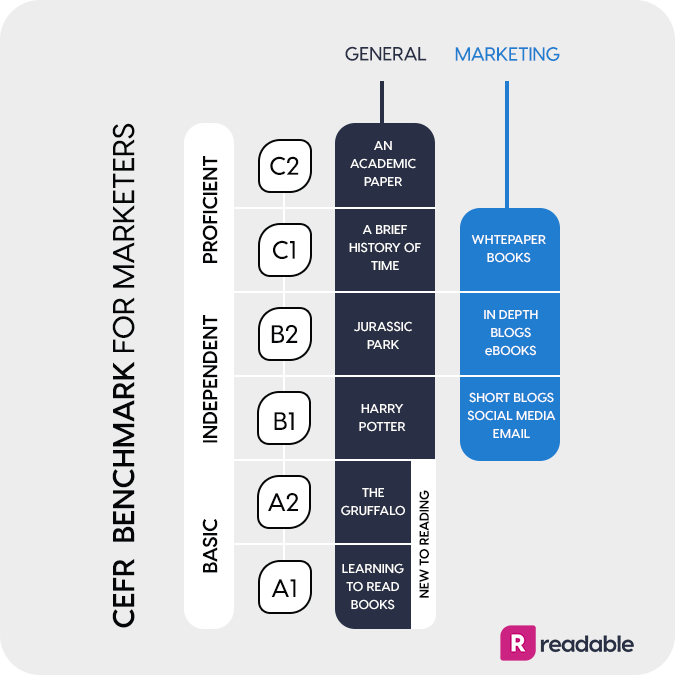What is CEFR?
CEFR stands for the Common European Framework of Reference for Languages. It is designed to analyse language skills. This can be applied to any language. It can also be used in the context of readability to reach a wider audience.
Where did CEFR come from?
CEFR was created in 1989. The Council of Europe developed it. It was a way to provide a methodology for language learning across Europe. It was part of a project named “Language Learning for European Citizenship”. It is a widely accepted test for language proficiency.
How does the test work?
CEFR takes the following variables into account:
- Average number of simple words
- Average number of words per sentence
- Average number of pronouns in a sentence
- Average number of syllables per word
- Average number of prepositions per sentence
- Number of names and terms - proper nouns
Readable’s algorithm maps all of these elements to a comprehension level.
The CEFR comprehension levels are as follows:
A1| Breakthrough or beginner
An A1 level CEFR grade means the language user can use everyday expressions and basic phrases. They can interact very simply. People communicating them should keep it simple, be clear and be willing to help.
A2| Waystage or elementary
An A2 level means the user can understand frequently used sentences. These relate to functional language in everyday life. They can describe their background, immediate environment and other familiar matters.
B1| Threshold or intermediate
A B1 can understand familiar and everyday topics. They can deal with most situations where they need to use the language. They can give brief explanations of topics of personal interest.
B2| Vantage or upper intermediate
A B1 user can understand both concrete and abstract topics. They can interact with a degree of spontaneity. They are fairly fluent. They are comfortable talking to native speakers. B1s can discuss an issue in detail and provide pros and cons.
C1| Effective operational efficiency or advanced
A C1 is refined in their understanding of the language. They can understand implied as well as obvious meanings. Their language is fluent and spontaneous. They can discuss more complex topics with ease and detail.
C2| Mastery or proficiency
A C2 user is at the highest level. They can understand almost everything they hear or read. They can express themselves spontaneously, very fluently and precisely. They can differentiate finer shades of meaning even in the most complex situations.

When is CEFR most useful?
The CEFR can also be mapped onto an IELTS score, a process which is included in Readable. Both formulas are used in a global context.
With this in mind, you can use both CEFR and IELTS to reflect on the global accessibility of your text. When writing for a global audience, we recommend aiming for a CEFR B2 level. This is vantage or upper-intermediate. It indicates a competent language user who may not understand more complex structures and word choices.

